Evercade EXP Overview
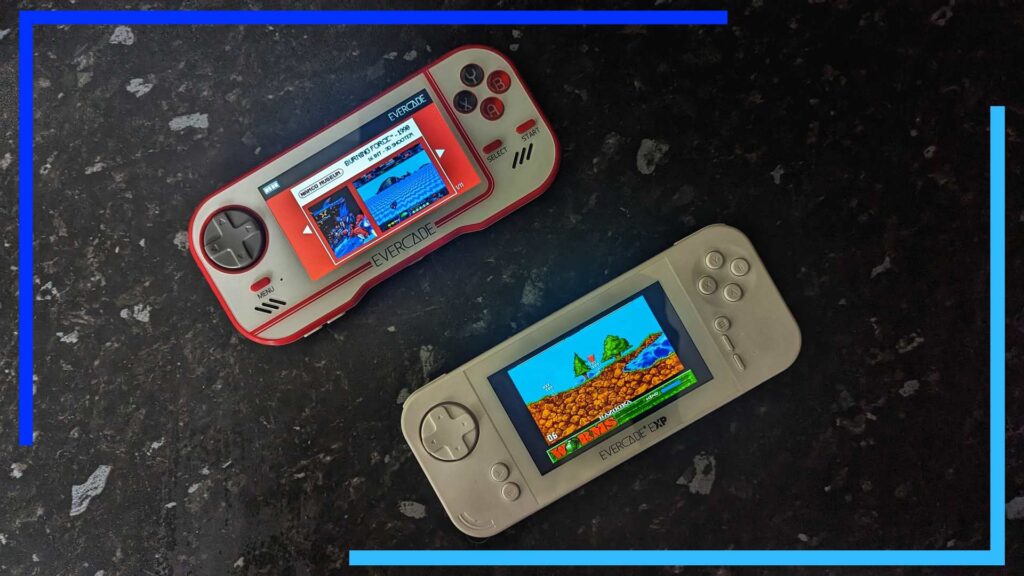
The Evercade series of consoles has always been about offering players a choice. Whereas other retro handhelds often become a vehicle for piracy, Blaze – the company behind the Evercade – has always been about ownership.
Don’t want to worry about the cops kicking down a door at 3 am because you’ve got a hard drive full of delisted Pokemon games? The Evercade sidesteps that issue by letting you buy cartridges of classic games.
The Evercade EXP is Blaze’s latest entry in the series and brings with it a sleek, modern look, the all-new feature in TATE mode, and extra secondary triggers.
Think of TATE mode as a vertical way of playing games. Spin the console by 90 degrees and you can play vertical shooters like Centipede, Commando, or Truxton in their original glory.
What’s interesting here is the Evercade features a slightly larger screen. In horizontal mode, black bars cover the left and right sides. But turn the console to play TATE mode games and the screen becomes filled.
In all honesty, I’m not sure how to feel about this setup. Black bars are ugly, but this is a better solution than chopping off sections of the screen to fit TATE games when played vertically.
Look and Feel
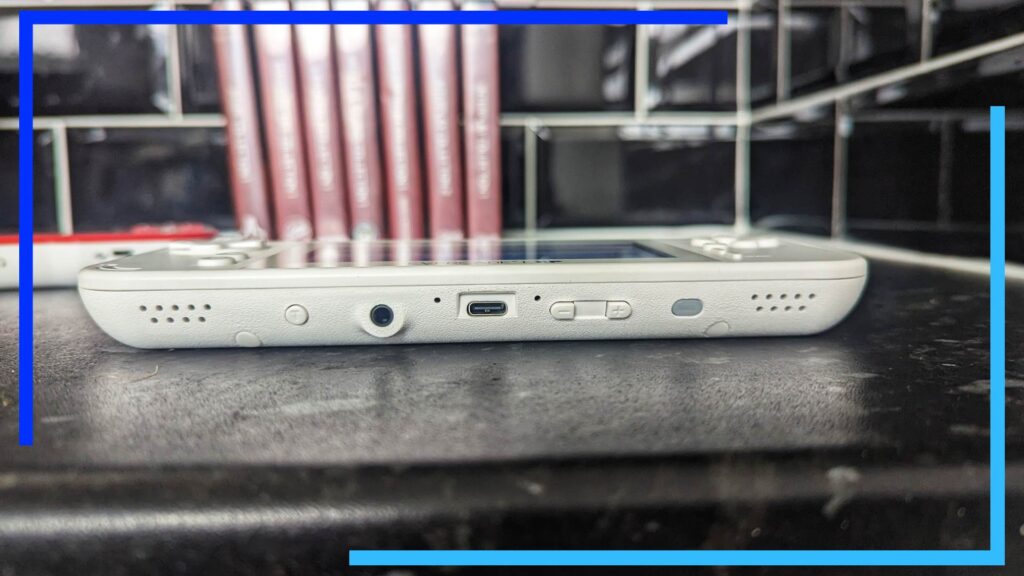
When you compare the Evercade EXP with something like the Anbernic RG505, it’s easy to see which console has put more thought into the design. The Evercade EXP isn’t a premium device by a longshot, but it manages to create something that feels like it’s value for money.
The matte plastic feels good in the hand, and ditching the original red and white design and overly-rounded face buttons makes it feel less like a mass-produced toy. It’s stylish in a minimalistic kind of way.
The stacked shoulder buttons are a smart design choice, too. Believe me when I say I’ve seen some awful, awful ways of handling triggers over the years. The Evercade EXP gets it right and is the gold standard in how to stack shoulder buttons properly.
Value, for Now
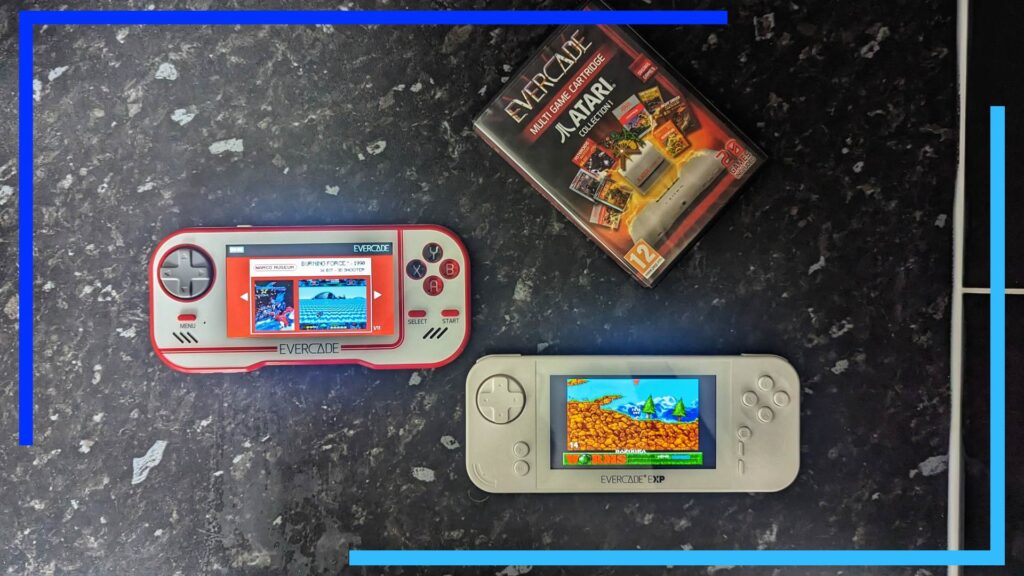
Despite the lovely design and comfortable button placement, the Evercade EXP is not a perfectly designed console. The screen saturation and muffled speakers show that this is a budget console at a budget price.
Of course, to keep costs low you need to source cheaper components. But as more and more handhelds fill the market, it’s easy to question how much Evercade should be looking at upgrading its kit and mindset. That would bring with it a host of issues – how much should the price go up? Is Blaze ready to tangle with the generation above primarily 16-Bit games? – but we’re fast approaching what the Evercade can offer.
We’re at a point in the handheld market where the likes of PS2, GameCube, and Dreamcast titles are playable for wallet-friendly prices. How much further can Blaze push mostly 8-Bit and 16-Bit games when there are meatier options available at a similar price point? But then no other company is offering the chance to physically own the games in cart form either. Is that enough to carry the Evercade forward? It’s hard to say.
Evercade EXP Specs
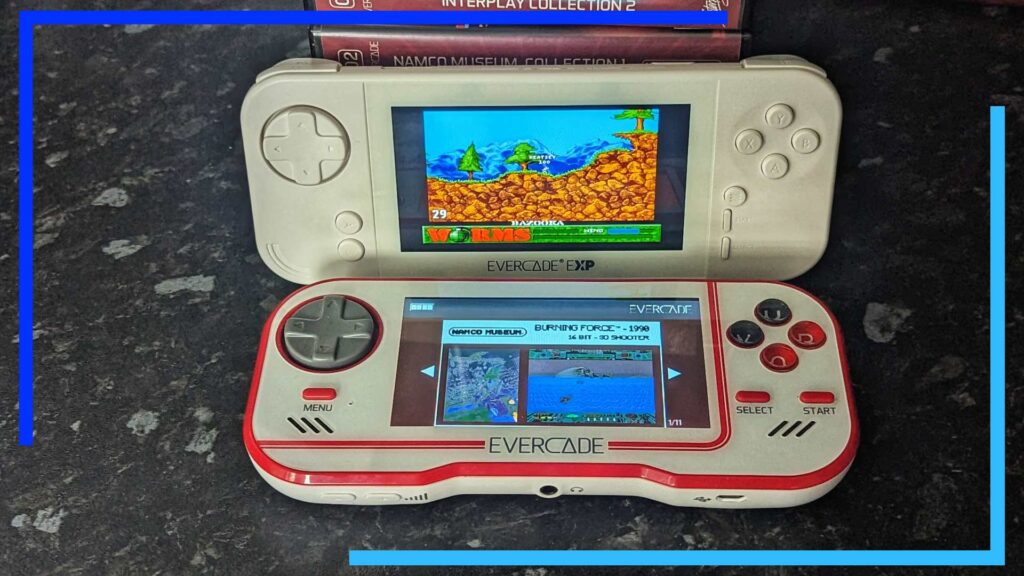
In terms of power, the Evercade EXP houses enough to run its massive library of games without any major issues. The processor may be slower than the likes of the Retroid Pocket 3, but the extra RAM certainly makes up for it.
- CPU: 1.5Ghz Processor
- RAM: 4GB
- Screen: 4.3-inch IPS display at a resolution of 800×480
- Charging: USB-C
- Output: 720p via mini-HDMI
- Battery: 3000mA – around four to five hours
Evercade EXP Price Info
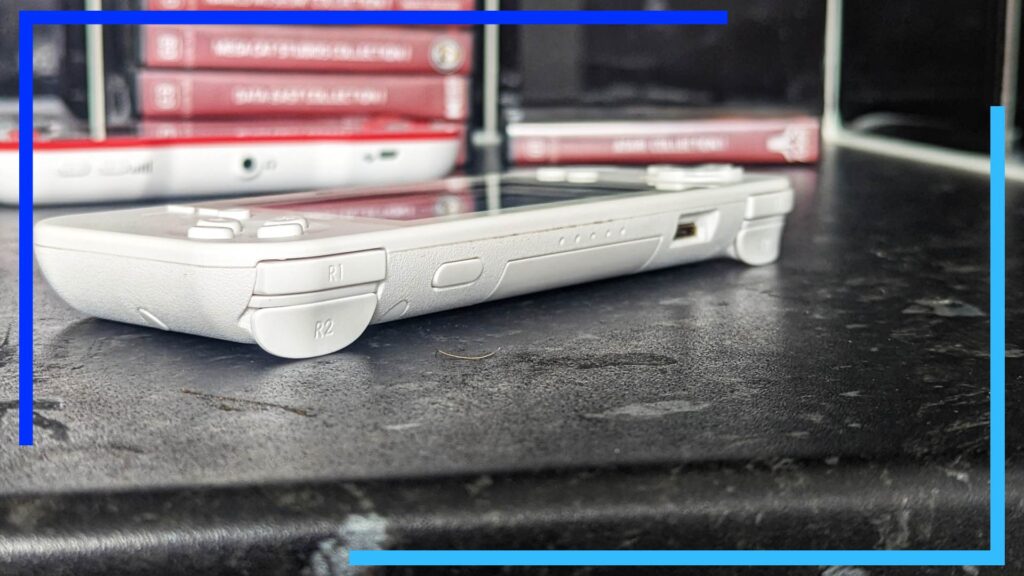
The Evercade EXP retails for $149/£129. To put that price in its place, it’s a more affordable option to the Anebrnic and Retroid devices and is only really bested by the Miyoo Mini at $78.62/£64.95.
Though it’s worth mentioning the Miyoo Mini is near impossible to get hold of at the moment, so that price isn’t worth factoring in too heavily.
Verdict
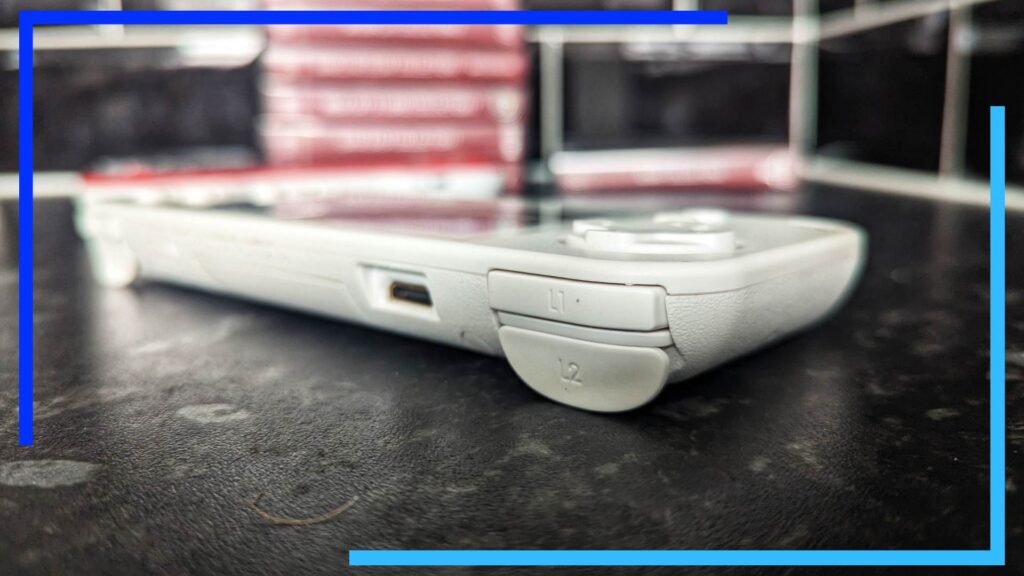
Let me lay it out like this: If you buy an Evercade EXP, you won’t be disappointed. In a sea of choice, the Evercade EXP stays upright where others frequently submerge. It’s a great console at a killer price, and an excellent way to relive the glory days of the 8-Bit and 16-Bit eras.
But reviewing it today I can’t help but question what’s next. Is this enough? For the price, yes, it is. But will it be enough a year from now? How many versions with minor upgrades does the world need? The further into the Evercade family we get, the further the future becomes less certain.
For now, the Evercade EXP comes easy to recommend. But the next iteration? That, I’m not too sure about.
Review unit provided by Blaze. All photos captured by Wesley Copeland.

